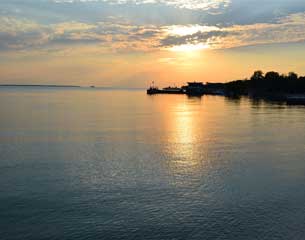
The Great Lakes, located in North American between the United States and Canada, have one of the largest amounts of available surface fresh water (non-glacier).
There are earth science facts here for many different parts of the earth. Find out more about these areas of earth science facts by visiting one of the sections below. The earth contains many different levels that effect life on earth differently. The solid part of the earth that we see is large. The solid part of the earth has a diameter of 12,742 km (7918 miles). The solid portion of the earth has different layers. At the top is the part we see. It is made from soil, sand and rock. We call the solid rock in the ground bedrock. The outer hard surface of the Earth is broken up into large plates. The large plates move around reshaping the Earth's surface. This is called plate tectonics. Plate tectonics is also responsible for earthquakes and volcanoes. Under the outer surface, is the inner earth which includes the mantle and the core. Scientists think the core is made out of iron and nickel. Since it is so hot in the earth's core, the metals nickel and iron may be liquid instead of a solid metal. At the Earth's surface we also see water. Water actually takes up more space on the surface of the Earth than solid land. Above the Earth's surface is the atmosphere. This is where our weather, air and protection from space come from. If we did not have an atmosphere, then besides not having any air to breathe, the suns rays would be deadly. Also meteors would hit our planet much more often than with our protective atmosphere. Our Earth is a great place to live. In fact, it is the only place in the universe where scientists have found life!